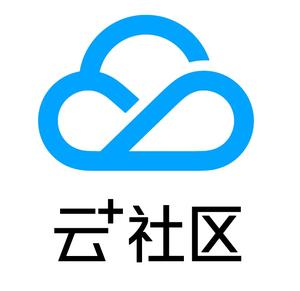欢迎大家前往 腾讯云+社区 ,获取更多腾讯海量技术实践干货哦~
作者:oceanlong | 腾讯 移动客户端开发工程师
前言
UI布局是整个前端体系里不可或缺的一环。代码的布局是设计语言与用户视觉感受沟通的桥梁,不论它看起来多么简单或是琐碎,但不得不承认,绝大部分软件开发的问题,都是界面问题。那么,如何高效的完成UI开发,也是软件行业一直在克服的问题。

所以,软件界面开发的核心点即是:如何减少UI设计稿的建模难度和减少建模转化到代码的实现难度
最初iOS提供了平面直角坐标系的方式,来解决布局问题,即所谓的手动布局。平面直角坐标系确实是一套完备在理论,这在数学上已经验证过了,只要我们的屏幕还是平面,它就肯定是有效的。但有效不一定高效,我们在日常的生活中,很少会用平面直角坐标系来向人描述位置关系。更多的是依靠相对位置。
所幸,iOS为我们提供自动布局的方法,来解决这一困境。

自动布局的基本理念
其实说到本质,它和手动布局是一样的。对一个控件放在哪里,我们依然只关心它的
(x, y, width, height)
。但手动布局的方式是,一次性计算出这四个值,然后设置进去,完成布局。但当父控件或屏幕发生变化时,子控件的计算就要重新来过,非常麻烦。
因此,在自动布局中,我们不再关心
(x, y, width, height)
的具体值,我们只关心
(x, y, width, height)
四个量对应的约束。
约束
那么何为约束呢?
obj1.property1 =(obj2.property2 * multiplier)+ constant value
复制代码子控件的某一个量一定与另一个控件的某一个量呈线性关系 ,这就是约束。
那么,给
(x, y, width, height)
四个量,分别给一个约束,就可以确定一个控件的最终位置。
//创建左边约束
NSLayoutConstraint *leftLc = [NSLayoutConstraint constraintWithItem:blueView attribute:NSLayoutAttributeLeft relatedBy:NSLayoutRelationEqual toItem:self.view attribute:NSLayoutAttributeLeft multiplier:1.0 constant:20];
[self.view addConstraint:leftLc];
复制代码这一段代码即是: 控件(blueView)的 x = rootView的x * 1.0 + 20 这里一定要注意,这样的一条约束,涉及了子控件和父控件,所以这条约束一定要添加到父控件中。
添加约束的规则:
- 如果两个控件是父子控件,则添加到父控件中。
- 如果两个控件不是父子控件,则添加到层级最近的共同父控件中。
示例
//关闭Autoresizing
blueView.translatesAutoresizingMaskIntoConstraints = NO;
//创建左边约束
NSLayoutConstraint *leftLc = [NSLayoutConstraint constraintWithItem:blueView attribute:NSLayoutAttributeLeft relatedBy:NSLayoutRelationEqual toItem:self.view attribute:NSLayoutAttributeLeft multiplier:1.0 constant:20];
[self.view addConstraint:leftLc];
//创建右边约束
NSLayoutConstraint *rightLc = [NSLayoutConstraint constraintWithItem:blueView attribute:NSLayoutAttributeRight relatedBy:NSLayoutRelationEqual toItem:self.view attribute:NSLayoutAttributeRight multiplier:1.0 constant:-20];
[self.view addConstraint:rightLc];
//创建底部约束
NSLayoutConstraint *bottomLc = [NSLayoutConstraint constraintWithItem:blueView attribute:NSLayoutAttributeBottom relatedBy:NSLayoutRelationEqual toItem:self.view attribute:NSLayoutAttributeBottom multiplier:1.0 constant:-20];
[self.view addConstraint:bottomLc];
//创建高度约束
NSLayoutConstraint *heightLc = [NSLayoutConstraint constraintWithItem:blueView attribute:NSLayoutAttributeHeight relatedBy:NSLayoutRelationEqual toItem:nil attribute:NSLayoutAttributeNotAnAttribute multiplier:0.0 constant:50];
[blueView addConstraint: heightLc];
复制代码

我们注意到,自动布局其实工作分两步:
- 创建视图的约束
- 将约束添加到合适的位置约束关系从上面的描述中,已经非常清晰了。那么如何寻找约束添加的合适位置呢?

到这里,我们只是解决了 如何减少UI设计稿的建模难度的问题 ,显然, 减少建模转化到代码的实现难度 这个效果没能达成。关于如何解决 减少建模转化到代码的实现难度 的问题,
开源库
上面的代码,我们可以看到,虽然自动布局已经比手动布局优雅不少了,但它依然行数较多。每条约束大约都需要三行代码,面对复杂的页面,这样开发出来,会很难阅读。
Masonry 则为我们解决了这个问题。
引入Masonry
我们选择使用 Cocoapods 的方式。引入比较简单:
- 我们先在工程目录下,创建 Podfile 文件:

2.编辑 Podfile

其中,'IosOcDemo'就是我们工程的名字,根据需要,我们自行替换。
3.添加依赖
完成后,执行指令
pod install
。CocoaPods就会为我们自动下载并添加依赖。
实践

这样的一个代码,用手动布局,我们大致的代码应该是这样:
-(void)initBottomView
{
self.bottomBarView = [[UIView alloc]initWithFrame:CGRectZero];
self.bottomButtons = [[NSMutableArray alloc]init];
_bottomBarView.backgroundColor = [UIColor yellowColor];
[self addSubview:_bottomBarView];
for(int i = 0 ; i < 3 ; i++)
{
UIButton *button = [[UIButton alloc]initWithFrame:CGRectZero];
button.backgroundColor = [UIColor redColor];
[_bottomButtons addObject:button];
[self addSubview:button];
}
}
-(void)layoutBottomView
{
_bottomBarView.frame = CGRectMake(20, _viewHeight - 200, _viewWidth - 40, 200);
for (int i = 0 ; i < 3; i++) {
UIButton *button = _bottomButtons[i];
CGFloat x = i * (_viewWidth - 40 - 20 * 4) / 3 + 20*(i+1) + 20;
CGFloat y = _viewHeight - 200;
CGFloat width = (_viewWidth - 40 - 20 * 4) / 3;
CGFloat height = 200;
button.frame = CGRectMake(x, y, width, height);
}
}
复制代码我们来看一下,在 Masonry 的帮助下,我们可以把刚刚的代码写成什么样的:
-(void)initBottomView
{
_bottomBarView = [[UIView alloc]initWithFrame:CGRectZero];
_bottomBarView.backgroundColor = [UIColor yellowColor];
_bottomBarView.translatesAutoresizingMaskIntoConstraints = NO;
[self addSubview:_bottomBarView];
[_bottomBarView mas_makeConstraints:^(MASConstraintMaker *make) {
make.left.equalTo(self).with.offset(20);
make.right.equalTo(self).with.offset(-20);
make.height.mas_equalTo(200);
make.bottom.equalTo(self);
}];
_bottomButtons = [[NSMutableArray alloc]init];
for(int i = 0 ; i < 3 ; i++)
{
UIButton *button = [[UIButton alloc]initWithFrame: CGRectZero];
button.backgroundColor = [UIColor redColor];
button.translatesAutoresizingMaskIntoConstraints = NO;
[_bottomButtons addObject:button];
[_bottomBarView addSubview:button];
[button mas_makeConstraints:^(MASConstraintMaker *make) {
if (i == 0) {
make.left.mas_equalTo(20);
}else{
UIButton *previousButton = _bottomButtons[i-1];
make.left.equalTo(previousButton.mas_right).with.offset(20);
}
make.top.mas_equalTo(_bottomBarView.mas_top);
make.width.equalTo(_bottomBarView.mas_width).with.multipliedBy(1.0f/3).offset(-20*4/3);
make.height.equalTo(_bottomBarView.mas_height);
}];
}
}
复制代码我们可以看到在 Masonry 的封装下,代码变得非常简练易读,需要行数略有增加,但是计算过程减少了,我们能更加关注于多个UIView间的位置关系,这与当前的UI设计语言是契合的。所以 Masonry 能否让我们更直观地表达UI。
源码解读
Masonry 的封装很有魅力,那么,我们可以简单地来看一下,它是如何封装的。我们再仔细看一下 Masonry 的API会发现,我们是直接在UIView上进行调用的。也就是说, Masonry 对UIView进行了扩展。
在 View+MASUtilities.h 中:
#if TARGET_OS_IPHONE || TARGET_OS_TV
#import <UIKit/UIKit.h>
#define MAS_VIEW UIView
#define MAS_VIEW_CONTROLLER UIViewController
#define MASEdgeInsets UIEdgeInsets
复制代码然后在 View+MASAdditions.h 中,我们看到了 Masonry 的扩展:
#import "MASUtilities.h"
#import "MASConstraintMaker.h"
#import "MASViewAttribute.h"
/**
* Provides constraint maker block
* and convience methods for creating MASViewAttribute which are view + NSLayoutAttribute pairs
*/
@interface MAS_VIEW (MASAdditions)
/**
* following properties return a new MASViewAttribute with current view and appropriate NSLayoutAttribute
*/
@property (nonatomic, strong, readonly) MASViewAttribute *mas_left;
@property (nonatomic, strong, readonly) MASViewAttribute *mas_top;
@property (nonatomic, strong, readonly) MASViewAttribute *mas_right;
@property (nonatomic, strong, readonly) MASViewAttribute *mas_bottom;
@property (nonatomic, strong, readonly) MASViewAttribute *mas_leading;
@property (nonatomic, strong, readonly) MASViewAttribute *mas_trailing;
@property (nonatomic, strong, readonly) MASViewAttribute *mas_width;
@property (nonatomic, strong, readonly) MASViewAttribute *mas_height;
@property (nonatomic, strong, readonly) MASViewAttribute *mas_centerX;
@property (nonatomic, strong, readonly) MASViewAttribute *mas_centerY;
@property (nonatomic, strong, readonly) MASViewAttribute *mas_baseline;
@property (nonatomic, strong, readonly) MASViewAttribute *(^mas_attribute)(NSLayoutAttribute attr);
...
/**
* Creates a MASConstraintMaker with the callee view.
* Any constraints defined are added to the view or the appropriate superview once the block has finished executing
*
* @param block scope within which you can build up the constraints which you wish to apply to the view.
*
* @return Array of created MASConstraints
*/
- (NSArray *)mas_makeConstraints:(void(NS_NOESCAPE ^)(MASConstraintMaker *make))block;
复制代码
一些,适配的代码,我省略了,先看核心代码。在刚刚的例子中,我们正是调用的
mas_makeConstraints
方法。
- (NSArray *)mas_makeConstraints:(void(^)(MASConstraintMaker *))block {
self.translatesAutoresizingMaskIntoConstraints = NO;
MASConstraintMaker *constraintMaker = [[MASConstraintMaker alloc] initWithView:self];
block(constraintMaker);
return [constraintMaker install];
}
复制代码
mas_makeConstraints
方法比较简单,只是封装了
MASConstraintMaker
初始化,设置约束和安装。这里的block就是我们刚刚在外层设置的约束的函数指针。也就是这一串:
^(MASConstraintMaker *make) {
make.left.equalTo(self.view).with.offset(10);
make.right.equalTo(self.view).with.offset(-10);
make.height.mas_equalTo(50);
make.bottom.equalTo(self.view).with.offset(-10);
}
复制代码由于约束条件的设置比较复杂,我们先来看看初始化和安装。
初始化
- (id)initWithView:(MAS_VIEW *)view {
self = [super init];
if (!self) return nil;
self.view = view;
self.constraints = NSMutableArray.new;
return self;
}
复制代码
初始化的代码比较简单,将传入的
view
放入
MASConstraintMaker
成员,然后创建
MASConstraintMaker
的约束容器(NSMutableArray)。
安装
- (NSArray *)install {
if (self.removeExisting) {
NSArray *installedConstraints = [MASViewConstraint installedConstraintsForView:self.view];
for (MASConstraint *constraint in installedConstraints) {
[constraint uninstall];
}
}
NSArray *constraints = self.constraints.copy;
for (MASConstraint *constraint in constraints) {
constraint.updateExisting = self.updateExisting;
[constraint install];
}
[self.constraints removeAllObjects];
return constraints;
}
复制代码安装的代码分为三块:
-
判断是否需要移除已有的约束。如果需要,会遍历已有约束,然后逐个
uninstall -
copy已有的约束,遍历,并逐一install -
remove掉所有约束,并将已添加的constraints返回。
install
的方法,还是继续封装到了
Constraint
中,我们继续跟进阅读:
我们会发现
Constraint
只是一个接口,
Masonry
中对于
Constraint
接口有两个实现,分别是:
MASViewConstraint
和
MASCompositeConstraint
。这两个类,分别是单个约束和约束集合。在上面的例子中,我们只是对单个
UIView
进行约束,所以我们先看
MASViewConstraint
的代码。以下代码
MASViewConstraint
进行了一定程度的简化,省略了一些扩展属性,只展示我们的例子中,会执行的代码:
- (void)install {
if (self.hasBeenInstalled) {
return;
}
...
MAS_VIEW *firstLayoutItem = self.firstViewAttribute.item;
NSLayoutAttribute firstLayoutAttribute = self.firstViewAttribute.layoutAttribute;
MAS_VIEW *secondLayoutItem = self.secondViewAttribute.item;
NSLayoutAttribute secondLayoutAttribute = self.secondViewAttribute.layoutAttribute;
// alignment attributes must have a secondViewAttribute
// therefore we assume that is refering to superview
// eg make.left.equalTo(@10)
if (!self.firstViewAttribute.isSizeAttribute && !self.secondViewAttribute) {
secondLayoutItem = self.firstViewAttribute.view.superview;
secondLayoutAttribute = firstLayoutAttribute;
}
MASLayoutConstraint *layoutConstraint
= [MASLayoutConstraint constraintWithItem:firstLayoutItem
attribute:firstLayoutAttribute
relatedBy:self.layoutRelation
toItem:secondLayoutItem
attribute:secondLayoutAttribute
multiplier:self.layoutMultiplier
constant:self.layoutConstant];
layoutConstraint.priority = self.layoutPriority;
layoutConstraint.mas_key = self.mas_key;
if (self.secondViewAttribute.view) {
MAS_VIEW *closestCommonSuperview = [self.firstViewAttribute.view mas_closestCommonSuperview:self.secondViewAttribute.view];
NSAssert(closestCommonSuperview,
@"couldn't find a common superview for %@ and %@",
self.firstViewAttribute.view, self.secondViewAttribute.view);
self.installedView = closestCommonSuperview;
} else if (self.firstViewAttribute.isSizeAttribute) {
self.installedView = self.firstViewAttribute.view;
} else {
self.installedView = self.firstViewAttribute.view.superview;
}
MASLayoutConstraint *existingConstraint = nil;
...
else {
[self.installedView addConstraint:layoutConstraint];
self.layoutConstraint = layoutConstraint;
[firstLayoutItem.mas_installedConstraints addObject:self];
}
}
复制代码
自动布局是一种相对布局,所以,绝大部分情况下,需要两个
UIView
(约束方与参照方)。在上面的方法中:
-
firstLayoutItem是约束方,secondLayoutItem是参照方 -
firstLayoutAttribute是约束方的属性,secondLayoutAttribute是参照方的属性。 -
MASLayoutConstraint就是NSLayoutConstraint的子类,只是添加了mas_key属性。到这里,我们就与系统提供的API对应上了。
NSLayoutConstraint *leftLc = [NSLayoutConstraint constraintWithItem:blueView attribute:NSLayoutAttributeLeft relatedBy:NSLayoutRelationEqual toItem:self.view attribute:NSLayoutAttributeLeft multiplier:1.0 constant:20];
[self.view addConstraint:leftLc];
复制代码再看看我们之前用系统API完成的例子,是不是格外熟悉?
那么接下来,我们就是要阅读
make.left.equalTo(self).with.offset(20);
make.right.equalTo(self).with.offset(-20);
make.height.mas_equalTo(200);
make.bottom.equalTo(self);
复制代码
是如何变成
firstLayoutItem
,
secondLayoutItem
,
firstLayoutAttribute
,
secondLayoutAttribute
和
layoutRelation
的。
约束条件的设置
回到前面的:
- (NSArray *)mas_makeConstraints:(void(^)(MASConstraintMaker *))block {
self.translatesAutoresizingMaskIntoConstraints = NO;
MASConstraintMaker *constraintMaker = [[MASConstraintMaker alloc] initWithView:self];
block(constraintMaker);
return [constraintMaker install];
}
复制代码我们接下来,就要看block的实现:
block
其实是一个函数指针。此处真正调用的方法是:
make.left.equalTo(self).with.offset(20);
make.right.equalTo(self).with.offset(-20);
make.height.mas_equalTo(200);
make.bottom.equalTo(self);
复制代码我们挑选其中一个,来看看源码实现:










